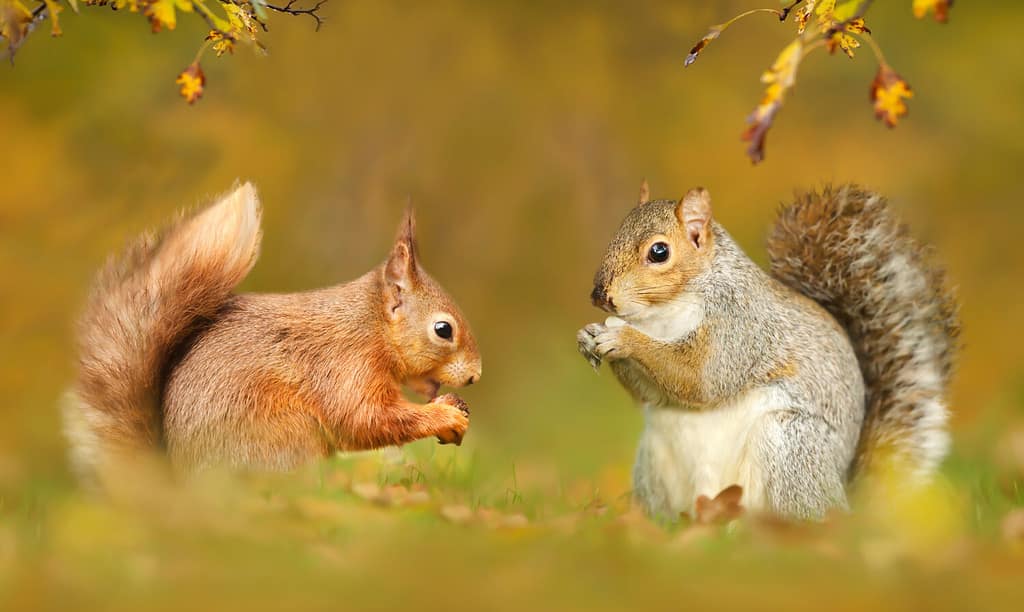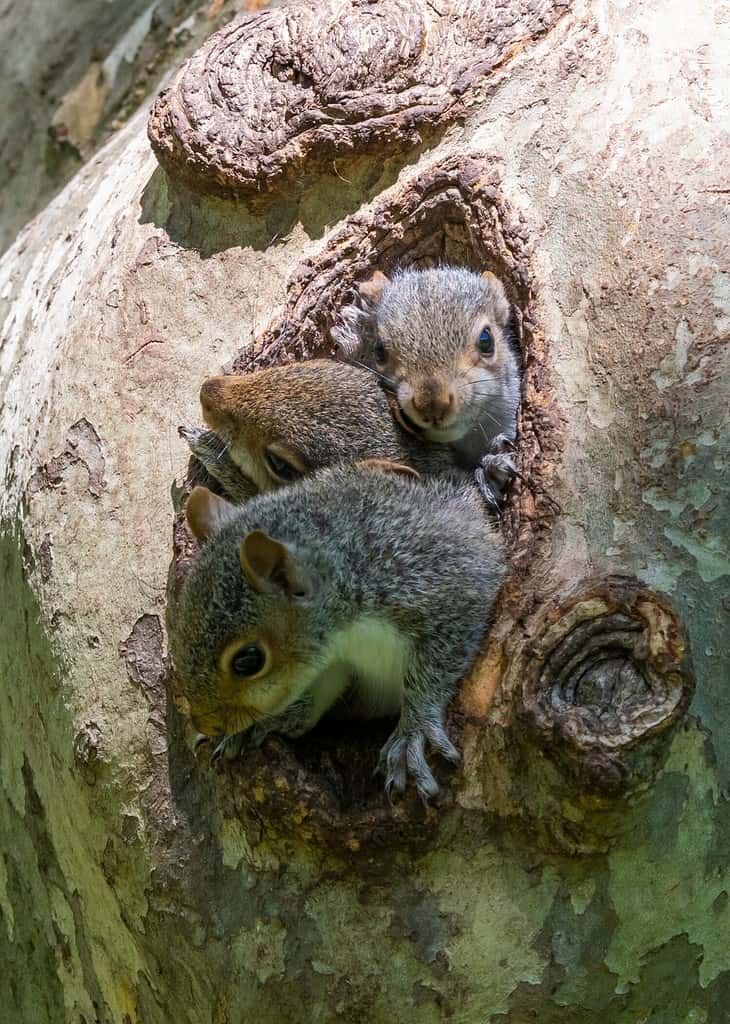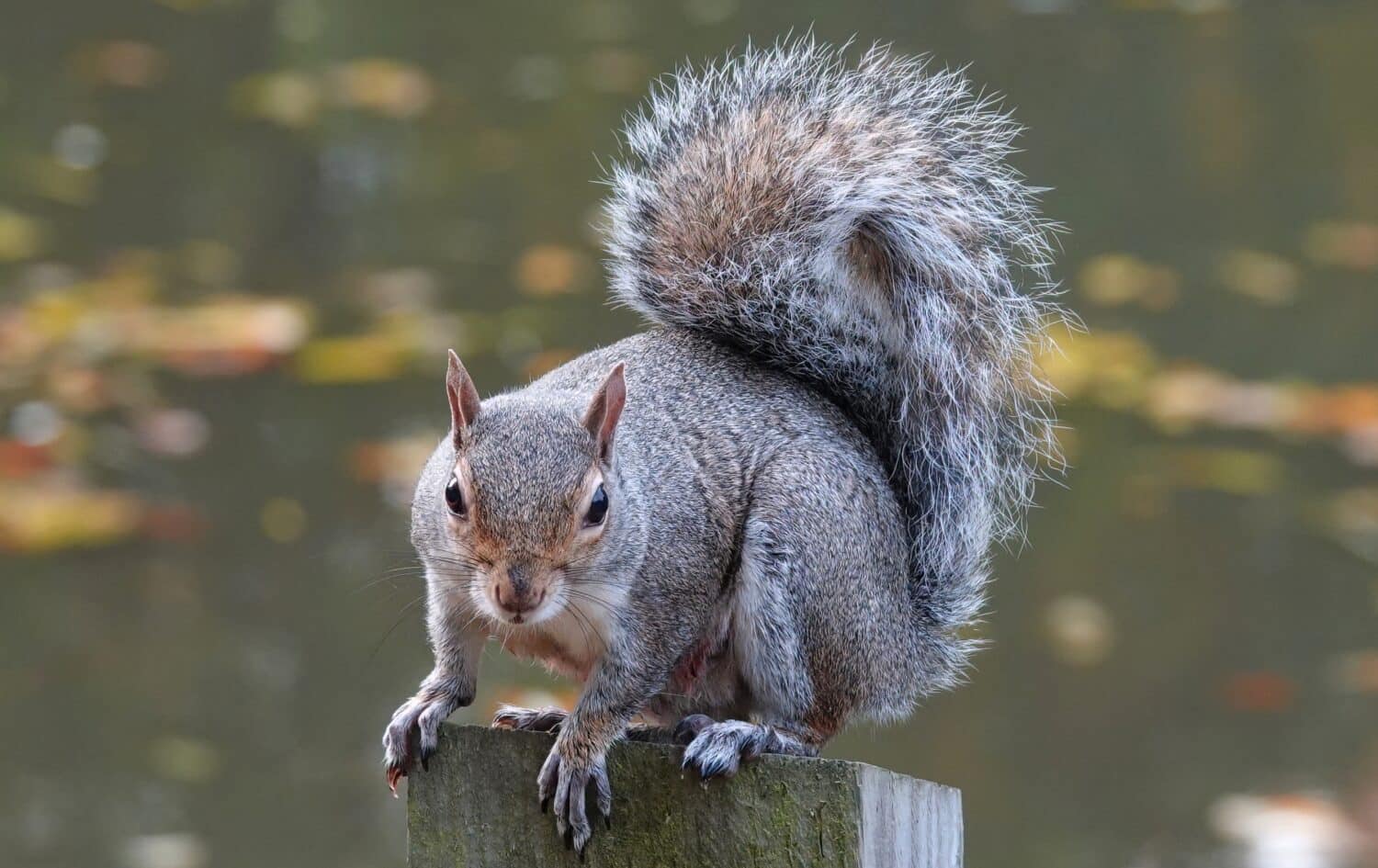If you’ve seen a squirrel scampering up a tree or perching on a feeder in your backyard, you may be curious whether it’s male or female. Unfortunately, differentiating between the sexes in squirrels is notoriously tricky. Currently, there are well over 200 extant species of squirrels, which means that sexual differences vary somewhat by species. However, a few differentials remain more or less consistent. Read on to discover six critical differences between male and female squirrels and the best way to tell them apart.
Summary Table of Male vs Female Squirrel
| Trait | Male | Female |
|---|---|---|
| Size | Usually similar to males, though females may be smaller in some species | Generally similar to males Vulva is present and close to the anus Mammary glands with visible teats are present and enlarge during the breeding season. |
| Anatomy | Generally similar to females Penis and scrotum are present and located away from the anus Scrotum swells and sometimes stains during breeding season | It gives off a scent to indicate estrus Receptive sexual partner Gives birth to and raises a litter of young |
| Social Behavior and Temperament | More aggressive and dominant | Less aggressive and dominant |
| Communication | Less physically affectionate | More physically affectionate, especially with other females |
| Roles in Raising Young | It gives off a scent to indicate estrus Receptive sexual partner Gives birth to and raises a litter of young | Responsible for raising young |
| Reproduction | Vies with other males for the right to reproduce Insertive sexual partner | Gives off a scent to indicate estrus Receptive sexual partner Gives birth to and raises a litter of young |
Male vs Female Squirrel: 6 Key Differences
Although it can be challenging to tell a male from a female squirrel from a distance, there are several key differences between the sexes. These include size, anatomy, social behavior and temperament, communication, roles in raising young, and reproduction. As with most animals, the surest way to tell male and female squirrels apart is by sexing them, which means examining their genitals.
Size

Male and female squirrels are typically the same size, though this can vary by species.
©Sam Robertshaw/Shutterstock.com
In most squirrel species, sexual dimorphism is not prominent. As a result, it is difficult to tell males and females apart using visual criteria such as size. Although some males may be larger than females depending on the species, the difference is insignificant enough to be a reliable determinant. In gray squirrels, for example, the size differential is usually negligible. That said, other species, like the Arctic ground squirrel, noticeably larger feature males.
Anatomy

The easiest way to tell male squirrels from females is by sexing them (examining their genitals).
©Troy Thomas/iStock via Getty Images
Because sexual dimorphism is limited in squirrels, males and females appear much the same in terms of size but also in terms of color and general anatomy. The most significant difference between the sexes is their genitalia and mammae. Males have penises and scrotums, while females have vulvas and mammary glands with teats. In females, the vulva is typically very close to the anal aperture under the tail. Male genitalia tend to sit further away from this opening. During breeding season, a male squirrel’s scrotum swells and, in some cases, stains. At the same time, a female squirrel’s teats enlarge and become more visible. This makes it easier to have sex with individuals from a distance.
Social Behavior and Temperament

Male squirrels tend to act more aggressively than females.
©Giedriius/Shutterstock.com
As in most animal species, male squirrels tend to be more aggressive and dominant than females. Older and larger squirrels consistently act more dominantly in both males and females. Male squirrels are typically bolder than females, which means they emerge from hibernation sooner and are more daring in their explorations as juveniles.
Male squirrels tend to congregate together when not mating with females. Females, on the other hand, either congregate with other females or preside alone over their litters. During the breeding season, the males fight other males for the right to mate. Once a male has conceded defeat and fled, the victor chases the female until he catches her.
Communication

Female squirrels are typically more physically affectionate than males.
©EcoPrint/Shutterstock.com
Both male and female squirrels communicate through a series of intricate calls and sounds. However, females are more likely to be physically affectionate with each other than males. Signs of affection between squirrels include touching noses, grooming, and sharing nests.
Roles in Raising Young

Unlike females, male squirrels have no role in raising their young.
©Marc A Sherman/Shutterstock.com
One of the primary differences between male and female squirrels has to do with the raising of their young. Male squirrels have little to no involvement in child-rearing, leaving the females to shoulder the responsibility. Females keep their litters close for the first few weeks or months. After this, juvenile males typically leave to join other males while adolescent females remain closer to their mother and other females.
Reproduction

A male squirrel will chase the female of his choice until he catches her.
©iStock.com/BetsyMoseley
Reproduction is one of the easiest ways to observe the differences between male and female squirrels. During the breeding season, female squirrels emit a distinctive scent that alerts nearby males that they’ve entered estrus. Male squirrels then fight other males for the right to reproduce with available females. After scaring away other suitors, the victorious male chases down his desired female. Males do not easily give up once the chase has begun. After mounting the female and inseminating her, the male leaves. The female may then mate with additional suitors.
After a gestation period, female squirrels give birth to live litters and raise them in dens within a confined territory. After a few weeks or months, the juveniles leave the den and eventually their mother.
Conclusion
The critical differences between male and female squirrels are size, anatomy, social behavior and temperament, communication, roles in raising young, and reproduction. Sexual dimorphism is extremely limited in most squirrel species, so it is difficult to distinguish between the sexes from a distance.
Thank you for reading! Have some feedback for us? Contact the AZ Animals editorial team.








